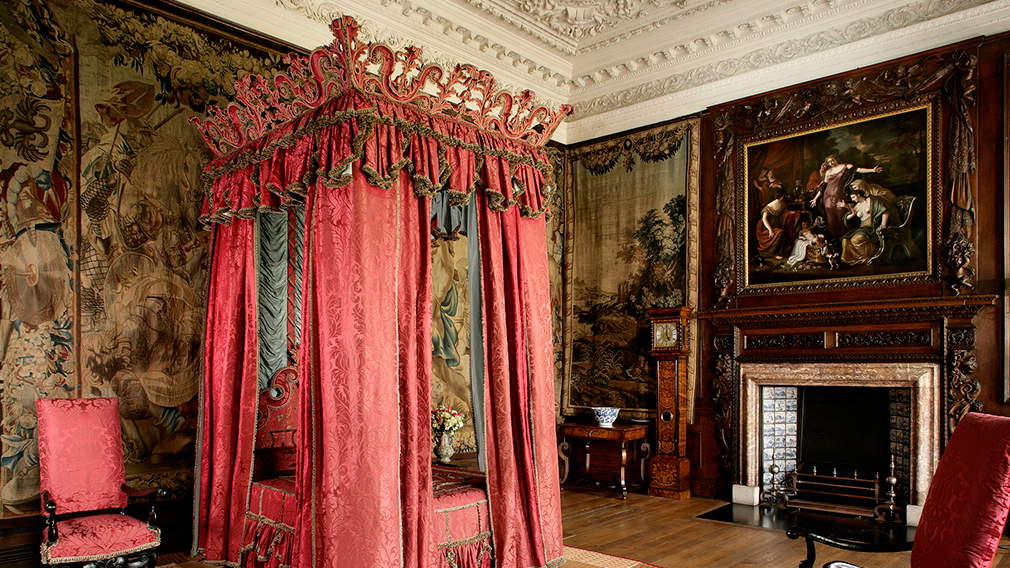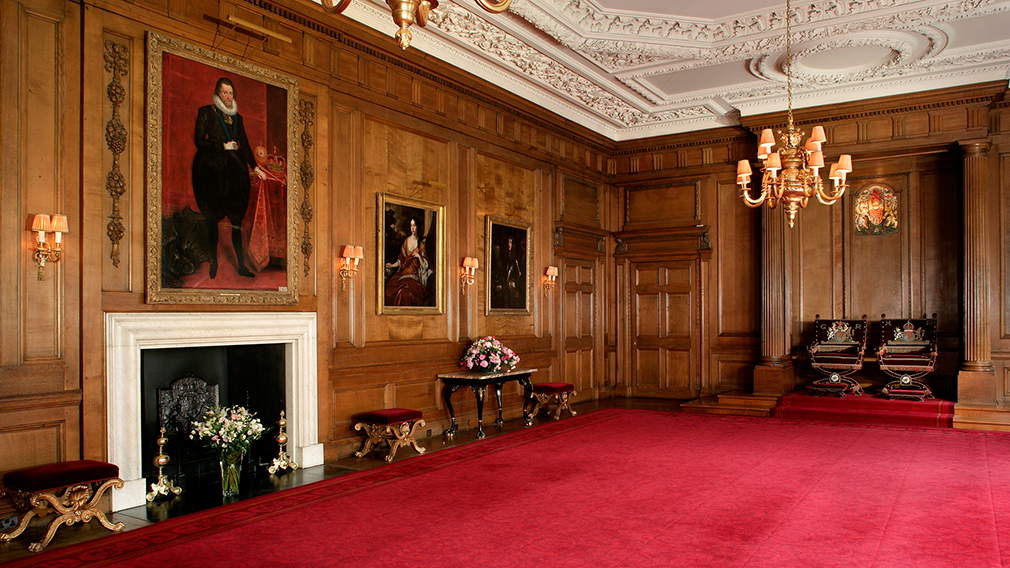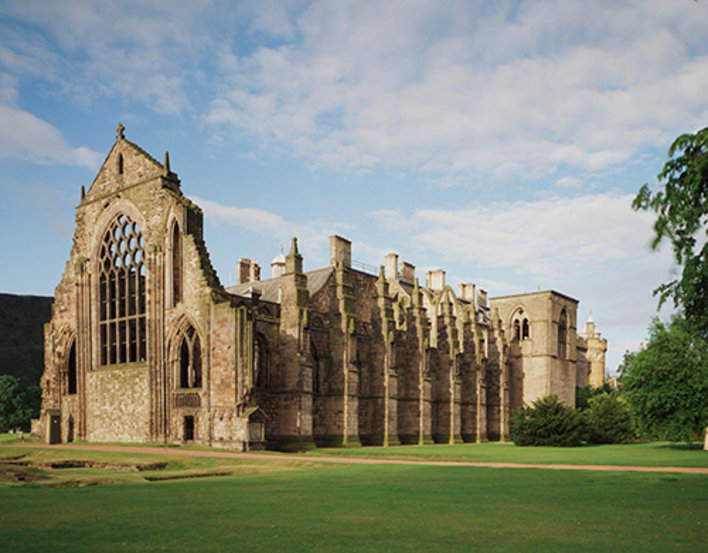Very ancient are the origins of Holyroodhouse Palace, the sumptuous home of Scottish kings that is now the official residence of the sovereigns of the United Kingdom, who use it during their stays in Scotland. According to one legend, in 1128 King David I of Scotland founded an abbey on the outskirts of Edinburgh after having a vision of a large deer with a cross between its antlers. He had interpreted it as a divine message: the name Holyrood comes from the Scottish expression “Haly Ruid,” meaning “holy cross,” precisely in reference to the legend. The history of the palace thus begins with theAugustinian abbey founded by David I: the complex was later enlarged over the years, with the addition of cloisters, a chapter house, refectory, buildings to accommodate guests, and at some point in history facilities were also added to house the king and his court. It was James IV of Scotland who came up with the idea of turning the abbey into a palace: after marrying Margaret Tudor, sister of Henry VIII of England, in 1503, the king promoted a series of works to adapt the old abbey to the renewed needs of the court. A tower was also added and work began on opening up the gardens of what was now becoming the Palace of Holyroodhouse. Of the ancient structures, however, nothing has survived because the palace was later remodeled: the oldest part is the 16th-century tower, completed under James V.
Further work was begun in the seventeenth century (meanwhile, in Holyrood Abbey, which had nevertheless continued to maintain its functions, King Charles I had been crowned), until, in 1650, a fire, which broke out during Oliver Cromwell’s visit (it is not known whether the event was accidental or was provoked) destroyed much of the building, and the palace was abandoned during the republican years (one area continued to be used as military housing). With the restoration of the monarchy and the return of Charles II to the throne, Holyroodhouse once again became the residence of Scotland’s royalty. Further renovations were promoted, designed by Scottish architect William Bruce (Blairhall, c. 1630 - 1710), which gave the palace the appearance we see today. With the end of Scottish independence (which occurred in 1707), Holyroodhouse passed to the British royals: in 1910, George V greatly modernized the palace and also chose it as the site of the memorial to King Edward VII (a statue of him was placed in front of the entrance to the abbey). Finally, in 1920, the palace was formally designated as the official residence of the King of England in Scotland, and also during the 20th century the palace, now managed by the Royal Collection Trust, was opened to the public and can be visited.
 |
| Holyroodhouse. Photo Royal Collection Trust |
 |
| The king’s bedroom. Photo Royal Collection Trust |
 |
| Mary Stuart’s bedroom. Photo Royal Collection Trust |
 |
| The throne room. Photo Royal Collection Trust |
 |
| The abbey church. Photo Royal Collection Trust |
 |
| The gardens. Photo Royal Collection Trust |
The palace today looks like the layout William Bruce gave it between 1671 and 1678 (except for the 16th-century tower), who designed a large quadrangular palace, with an austere classical style, which inside is built around a three-story courtyard (with the lower one featuring a Doric-columned loggia). A visit inside begins with the State Apartments, best known for their stucco decorations and rich collections of French and Flemish tapestries. Among the rooms that can be visited are the King’s Bedchamber, the largest room, which in the past could be accessed only by the most distinguished guests of Holyroodhouse; the Dining Room, which is still used in that capacity by the British royals when they stay in the palace; the Throne Room (with the pair of thrones commissioned by George V in 1911) and the Privy Chamber, now used by the queen as a room for formal luncheons with guests and as an audience room, respectively.
Of particular historical value are the Rooms of Mary Stuart, perhaps the most famous queen to have lived at Holyroodhouse (specifically, between 1561 and 1567). It is possible to visit the 16th-century tower, as well as the queen’s bedroom with its painted frieze and “impossibly low” door, as the official presentation states (despite the fact that Mary Stuart was six feet tall, an exceptional stature for the time, especially for a woman); the Supper Room, where Mary dined when the murder of David Rizzio, a courtier suspected of being the queen’s lover and particularly disliked by the Scottish court, took place; and the Outer Chamber, Mary Stuart’s audience chamber. By contrast, the Palace’s largest room, the Great Gallery, displays a long gallery of portraits of the kings of Scotland, featuring 95 kings and queens.
Outside the palace at Holyroodhouse it is possible to visit what remains of the abbey church, one of the largest in medieval Scotland, now reduced to an unroofed church, characterized by its large, mighty Romanesque arches and Gothic mullioned windows with two lights. Not far away are the Palace gardens, the palace gardens that offer splendid views of Arthur’s Seat, the hills surrounding Holyrood Park, and where special essences such as theWentworth elm, a particularly prized cultivar thought to be extinct until recently, can be found, and where luxuriant blooms such as those surrounding the Queen Mary sundial, made for the coronation of Charles I in 1633, can be admired.
Today, as mentioned, Holyroodhouse is both the official residence of British kings in Scotland and a visitable museum. The British court stays there one week a year (“Holyrood Week” or “Royal Week,” as it is called in Scotland), usually between late June and early July. The queen’s arrival is greeted with the Presentation of the Keys ceremony, in which the keys of Edinburgh are presented to the queen as a sign of the city’s loyalty. Afterwards, the queen gives her Garden Party, the reception that opens Holyrood Week and her institutional engagements. During the week, of course, the palace cannot be visited: however, visitors are crucial to Holyroodhouse because they ensure its preservation and maintenance. In fact, the Royal Collection Trust receives no public funding, and all costs related to opening the palace to the public are covered by ticket revenue and, in general, by what is left by visitors. And a visit to the Palace of Holyroodhouse is part of the must-do if you are in Edinburgh.
 |
| The Palace of Holyroodhouse in Edinburgh, the official residence of British kings in Scotland |
Warning: the translation into English of the original Italian article was created using automatic tools. We undertake to review all articles, but we do not guarantee the total absence of inaccuracies in the translation due to the program. You can find the original by clicking on the ITA button. If you find any mistake,please contact us.